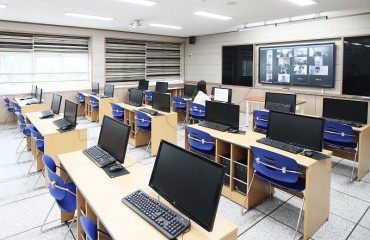SEOUL, Jul. 1 (Korea Bizwire) – Samsung Electronics, the South Korean tech giant, saw a significant decrease in its tax and statutory charges last year, while experiencing a slight increase in labor costs, according to the company’s latest sustainability report.
The 2024 Sustainability Report, released on June 28, reveals that Samsung’s global tax and statutory charges, excluding corporate and income taxes, fell to 8.2 trillion won in 2023. This marks a 36.9% decrease from the previous year’s 13 trillion won.
In South Korea, the company’s home market, the reduction was even more pronounced. Samsung paid about 4.76 trillion won in domestic taxes and charges, down from 9.6 trillion won in 2022 — a decrease of roughly 5.5 trillion won.
The proportion of domestic tax payments to total global payments also shifted significantly. In 2022, 74% of Samsung’s tax and statutory charges were paid in South Korea. This figure dropped to 58.1% in 2023, a decrease of 15.9 percentage points.
Outside of South Korea, the Americas and Europe accounted for 21.5% of the company’s tax payments, while Asia represented 19.1%, with other regions making up the remaining 1.3%. Both the Americas/Europe and Asia saw increases in their share of Samsung’s tax contributions compared to the previous year.
Samsung’s global sales reached 258.9 trillion won in 2023. The Americas was the largest market, generating 92.1 trillion won (35%) in sales. Europe followed with 48.1 trillion won (19%), while South Korea accounted for 45.6 trillion won (18%). Asia and Africa, including China, contributed 73.1 trillion won, representing 28% of total sales.
While tax payments decreased, labor costs continued to rise. Samsung’s spending on employee compensation increased by 400 billion won, reaching 38 trillion won in 2023, up from 37.6 trillion won in 2022 and 34.6 trillion won in 2021.
Interestingly, this increase in labor costs came despite a slight decrease in the company’s global workforce. The total number of employees fell from 270,278 in 2022 to 267,860 in 2023. While domestic employment in South Korea grew from 117,927 to 120,756, overseas staff numbers decreased from 152,245 to 147,104.
The report also highlighted Samsung’s progress in increasing gender diversity in leadership roles. The company aims to more than double the proportion of female executives by 2030, based on 2022 figures. The percentage of female executives has risen from 3.8% in 2013 to 6.3% in 2018 and 7.3% in 2023. Similarly, the proportion of women in management positions has increased from 11.8% in 2013 to 17.6% last year.
Kevin Lee (kevinlee@koreabizwire.com)







